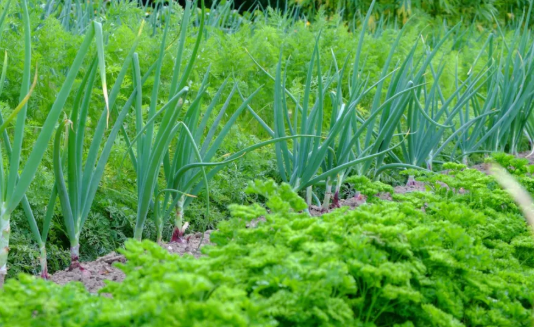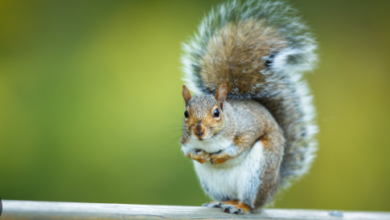Top Companion Planting Combinations That Boost Yield and Repel Pests

Companion planting is all about putting the right plants next to each other to help your garden grow better and keep bugs away.
When you pick the right combos, you can keep pests at bay naturally and make your veggies taste even better. It’s a cool way to garden without needing loads of nasty chemicals, which is great for the planet.
Getting the right plant buddies together is key to having a garden where everything grows well and supports each other. Knowing which plants get on well can turn your garden from basic to buzzing.
Tomatoes and Basil
Tomatoes and basil make a great team in the garden, not just for tasty meals but also for helping each other grow and keeping bugs away. Gardeners love this combo!
Planting Tips
For the best results, plant your tomato plants about 24 inches apart. Pop some basil plants between them, around 12 inches away. The basil’s smell helps keep pesky bugs like whiteflies off your tomatoes.
Care Instructions
Both tomatoes and basil love the sun, so pick a sunny spot. Water them regularly, but don’t go overboard or the roots might get soggy. Stick to these tips and you’ll have loads of juicy tomatoes and fresh basil, turning your garden into a little paradise.
Carrots and Onions
If you’re looking to keep pests at bay and make the most of your gardening space, why not try planting carrots and onions together? Onions have a scent that confuses carrot flies, which are notorious for laying eggs on carrots.
By planting onions next to your carrots, you create a natural shield against these pesky intruders, keeping your veggies safe and sound.
For the best results, plant your carrots and onions in alternating rows. Leave about 12 inches between the rows to ensure both plants get plenty of sunlight and room to grow.
Choose a sunny spot with good drainage to avoid waterlogged soil and pesky weeds that can cramp your plants’ style. You might consider laying out your garden with an “onion-on-the-edge” strip to maximise space and pest control.
When it comes to care, water them regularly, but be careful not to drown them. A handful of straw mulch works wonders, helping to keep the soil moist and the weeds at bay. Keep an eye on your onion tops—they’ll turn yellow and floppy when they’re ready to harvest.
As for the carrots, let them chill in the ground a bit longer, and they’ll get even sweeter. A gentle tug on a carrot top should tell you if it’s ready to be pulled out.
So why not give this companion planting a go? It’s a simple, natural way to boost your garden’s defences and enjoy a bountiful harvest.
Marigolds and Vegetables
Ever notice how a splash of orange can chase the bugs away? Marigolds are fantastic for keeping those pesky pests at bay, making them the perfect pals for your veggies. Their strong scent sends unwanted visitors like nematodes, aphids, and whiteflies packing.
Research even shows they release a compound called α-terthienyl, which pests find uninviting. So, if you’re looking to protect your tomatoes, cucumbers, beans, or even lettuce and carrots, marigolds are your go-to solution.
Imagine planting a ring of marigolds around your tomato bed and seeing fewer aphids on the leaves—it’s like putting up a little bug-proof fence while your veggies thrive.
For the best results, consider planting marigolds around your garden’s edges. They’ll act like a natural barrier against unwanted bugs. Plus, they add a pop of bright colour that livens up any British garden, whether it’s a quaint cottage garden or a spacious allotment.
If you’re unsure about planning the best layout or pairing methods, some gardeners prefer to get advice from professional gardening services. This is to make sure everything is planted in the right way for maximum growth and pest control.
Plant them in rows or small bunches, about 8 to 10 inches apart, ensuring they have enough room to grow without overshadowing your veggies.
If you’re eager, you can start them indoors in pots before the frost lifts, so they’re ready to go outside as soon as the chill is gone. It’s like adding a splash of sunshine on a grey British day.
With marigolds scattered among your plants, your garden will not only be healthier but more productive, too. Give marigolds a try this season and see the difference for yourself.
Beans and Corn
Beans and corn are like best mates in your garden. Beans are super cool because they grab nitrogen from the air and boost the soil, which helps the corn grow strong without needing heaps of chemical fertilisers.
This natural teamwork means you can cut back on synthetic stuff. To see them work together, plant corn in straight lines about 12 inches apart and pop bean seeds between them.
Wait until the corn sprouts to about 4 inches tall before introducing the beans. It’s like they’re waiting for the corn to be ready for a piggyback ride. Keep the soil moist, but not soggy, because they both prefer not to have wet feet.
Imagine your garden turning into a lively playground with tall corn acting as a ladder for twirling beans, leading to healthier soil and corn, plus a great harvest. It’s like giving your corn a free-standing bean-climber gym! While you’re at it, keep an eye on the bean vines as they grow.
You might want to give them a gentle nudge to guide them up the corn stalks. Trying out this combo means nature does most of the work, leaving you with lush plants and loads of crops.
Give it a go this season and see how much more you harvest!
Synergy between Squash and Nasturtiums
Squash and nasturtiums are a brilliant team for any garden. Nasturtiums draw aphids away from squash, keeping your plants safe from those annoying bugs. It’s a clever way to grow healthy squash without using chemical sprays.
Planting Layout
To get the best results, plant nasturtiums around the edges of your squash beds, with about 10 inches between each one. This setup gives nasturtiums room to spread and work their magic.
Care Practices
Both of these plants love sunny spots and soil that drains well. Keep an eye on watering, making sure the soil stays damp but not soaked, to avoid root problems. Plus, the bright flowers of nasturtiums add a pop of colour, making your garden both useful and lovely to look at.
Peppers and Oregano
Pairing peppers with oregano is like having a garden dream team. They get along great and keep annoying bugs away. Oregano scares off pests like aphids and spider mites, helping peppers grow strong and healthy.
Planting Strategies
Try planting oregano about 6 to 8 inches from your peppers. This gives them both plenty of sunlight and nutrients without fighting over space. Oregano’s pretty tough and doesn’t need much attention—just a little trim now and then to keep it from taking over.
Pest Control Benefits
Peppers and oregano love sunny spots with well-drained soil. Growing them together means loads of peppers and a garden that smells amazing with that lovely oregano scent. This pair is a fantastic choice for a lively and healthy garden.
Conclusion
Companion planting is a great way to make your garden thrive while keeping pests away. Pairing plants like tomatoes with basil or peppers with oregano can cut down on pests and boost how much you harvest.
Plus, these combos can make your veggies taste better and keep them healthy. Trying these plant pairs can turn your garden into a lively, productive spot. Give it a shot and see how your garden perks up, making the whole gardening thing more fun and rewarding.



